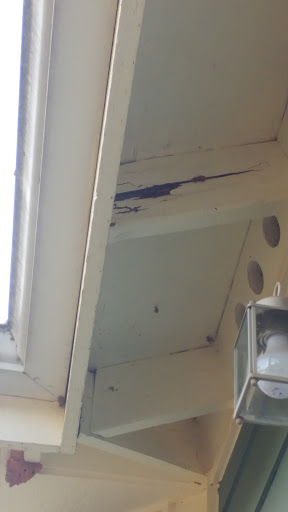Subject: Rotted Truss End Cap
Date: Thursday, April 30, 2020
Hello,
I was looking at products on your site and was thinking the CPES would be a good product to use. What do you suggest for my roof end point? It’s a 2x6. The house is only 10 years old no roof or gutter leaks, I can only assume that this board was dry rotted from the mill.
Nathan


Nathan,
While it is possible, it is not very likely that the wood had rot from the mill. “Dry” wood will vary from about 12 percent moisture content, up to about 16 percent, depending on the species, in average relative humidity. If you have a species at the higher end of this range, plus above average relative humidity, it doesn’t take much to push the wood above 20 percent. Most wood rot is a type of fungus. Which need between 20 and 30 percent moisture content in the wood to get going.
Along these same lines, it doesn’t take much of a leak to push the moisture content of the wood into the rotting zone of 20–30 percent. Perhaps one of the gutter fasteners is allowing water to wick along its length, and into the wood. Perhaps the roof shingles have some defect, and water is dripping between the gutter and facia board in that location. Whatever the source, it might be only enough to increase the moisture level of the wood, not enough to drip through and show up. Excessive moisture is almost always the reason that rot starts, and so I like to figure out how the water has been getting into the wood, so I can prevent the same thing from happening here, or nearby, once I have fixed the damaged wood.
The product you mentioned, CPES, is not in stock currently, and is not likely to be in stock anytime in the near future. Which is why we are selling the S-1 Sealer. It is very similar in performance. The main differences are that S-1 doesn’t come in a cold weather formula, and penetrates slower.
Depending on exactly how far the damage has progressed, I would suggest the S-1 Sealer, and the Sculpwood Paste, with some of the General Purpose Epoxy Resin, if there is a lot of internal cavities. Which you should be able to tell once you drill some slightly slanted holes into the side of the wood. Downward slanted holes allow you to put product in, without it running out.
Doc